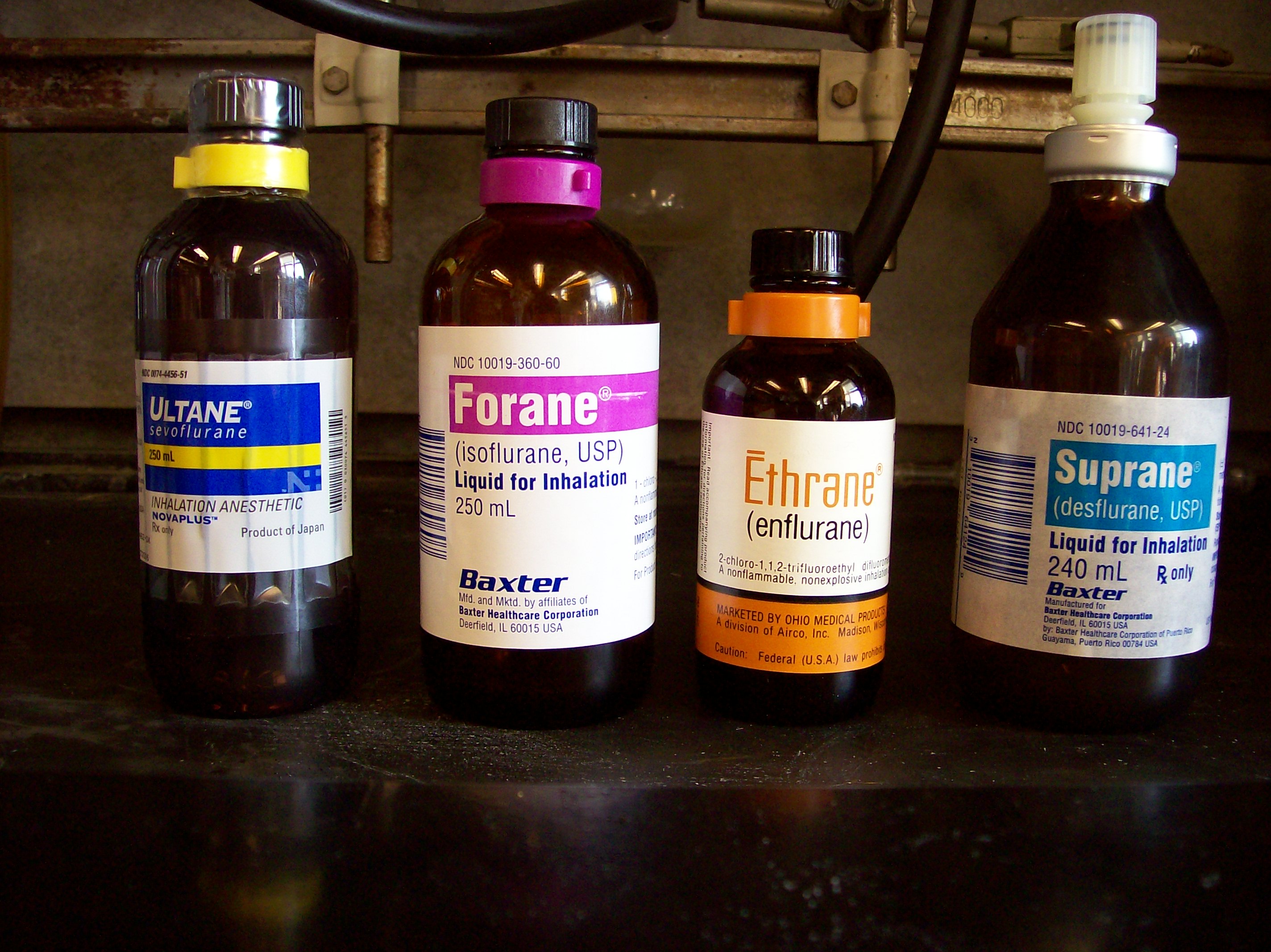|
Concentration Effect
In the study of inhaled anesthetics, the concentration effect is the increase in the rate that the Fa (alveolar concentration)/Fi (inspired concentration) ratio rises as the alveolar concentration of that gas is increased. In simple terms, the higher the concentration of gas administered, the faster the alveolar concentration of that gas approaches the inspired concentration. In modern practice it is only relevant for nitrous oxide since other inhaled anesthetics are delivered at much lower concentrations due to their higher potency. See also * Second gas effect During induction of general anesthesia, when a large volume of a gas (e.g. nitrous oxide) is taken up from alveoli into pulmonary capillary blood, the concentration of gases remaining in the alveoli is increased. This results in effects known as th ... References * * {{Anesthesia Anesthesia ... [...More Info...] [...Related Items...] OR: [Wikipedia] [Google] [Baidu] |
Inhalational Anesthetic
An inhalational anesthetic is a chemical compound possessing general anesthetic properties that can be delivered via inhalation. They are administered through a face mask, laryngeal mask airway or tracheal tube connected to an anaesthetic vaporiser, anesthetic vaporiser and an anesthetic machine, anesthetic delivery system. Agents of significant contemporary clinical interest include Volatility (chemistry), volatile anesthetic agents such as isoflurane, sevoflurane and desflurane, as well as certain anesthetic gases such as nitrous oxide and xenon. List of inhalational anaesthetic agents Currently-used agents * Desflurane * Isoflurane * Nitrous oxide * Sevoflurane * Xenon Previously-used agents Although some of these are still used in clinical practice and in research, the following anaesthetic agents are primarily of historical interest in Developed country, developed countries: * Acetylene * Chloroethane, Chloroethane (ethyl chloride) * Chloroform * Cryofluorane * Cyclopropa ... [...More Info...] [...Related Items...] OR: [Wikipedia] [Google] [Baidu] |
Nitrous Oxide
Nitrous oxide (dinitrogen oxide or dinitrogen monoxide), commonly known as laughing gas, nitrous, or nos, is a chemical compound, an oxide of nitrogen with the formula . At room temperature, it is a colourless non-flammable gas, and has a slightly sweet scent and taste. At elevated temperatures, nitrous oxide is a powerful oxidiser similar to molecular oxygen. Nitrous oxide has significant medical uses, especially in surgery and dentistry, for its anaesthetic and pain-reducing effects. Its colloquial name, "laughing gas", coined by Humphry Davy, is due to the euphoric effects upon inhaling it, a property that has led to its recreational use as a dissociative anaesthetic. It is on the World Health Organization's List of Essential Medicines. It is also used as an oxidiser in rocket propellants, and in motor racing to increase the power output of engines. Nitrous oxide's atmospheric concentration reached 333 parts per billion (ppb) in 2020, increasing at a rate of abo ... [...More Info...] [...Related Items...] OR: [Wikipedia] [Google] [Baidu] |
Second Gas Effect
During induction of general anesthesia, when a large volume of a gas (e.g. nitrous oxide) is taken up from alveoli into pulmonary capillary blood, the concentration of gases remaining in the alveoli is increased. This results in effects known as the "concentration effect" and the second gas effect. These effects occur because of the contraction of alveolar volume associated with the uptake of the nitrous oxide. Previous explanations by Edmond I. Eger and Robert K. Stoelting have appealed to an extra-inspired tidal volume due to a potential negative intrapulmonary pressure associated with the uptake of the nitrous oxide. There are two extreme breathing patterns and the extra-inspired tidal volume is an artificial construct associated with one of these patterns. * * Errata British Journal of Anaesthesia 1997;79:268 Thus it is the volume change that actually causes the effects. An applicable example from Stedman's medical dictionary When a constant concentration of an anesthetic suc ... [...More Info...] [...Related Items...] OR: [Wikipedia] [Google] [Baidu] |

